Employee Notification Letter
[Your Company Logo or Letterhead]
[Company Name]
[Company Address]
[City, State, Zip Code]
[Date]
[Employee's Full Name]
[Employee's Address]
[City, State, Zip Code]
Dear [Employee's Name],
Re: Notification of Employment Status
We hope this letter finds you well. We are writing to officially notify you of a change in your employment status at [Company Name]. This letter serves as a formal communication regarding the following:
1. Termination of Employment (or)
2. Temporary Layoff (or)
3. Change in Employment Status (e.g., Promotion, Demotion, Transfer)
[Option 1 - Termination of Employment]
It is with deep regret that we inform you of our decision to terminate your employment with [Company Name], effective [last working day, typically 2 weeks from the date of the letter]. The decision has been made after a careful assessment of various factors, and it is not a reflection of your abilities or dedication. We understand that this may be a difficult time for you, and we will provide you with all the necessary assistance during this transition period.
[Option 2 - Temporary Layoff]
Due to unforeseen circumstances that have affected our operations, we are implementing a temporary layoff. This temporary layoff is expected to begin on [start date] and will last for [duration]. Please note that this layoff is not a termination of your employment, and we intend to recall you to work when the situation improves.
[Option 3 - Change in Employment Status]
We are pleased to inform you that there will be a change in your employment status at [Company Name]. As of [effective date], you will be [state new position/title and a brief description of the new role]. We believe that your skills and experience make you an excellent fit for this role, and we are excited about the value you will bring to the team in your new capacity.
In all scenarios, please be advised that you will receive your final paycheck (including any applicable benefits and entitlements) on [date]. You will also receive any accrued vacation pay, if applicable. For any outstanding company property, we kindly request that you return it to [department/person] on or before your last working day.
If you have any questions or require further clarification, please do not hesitate to contact [HR department or manager's name] at [HR contact number or email address].
We genuinely appreciate your contributions during your tenure at [Company Name], and we wish you all the best in your future endeavors. We hope that our paths may cross again in the future.
Thank you for your understanding and cooperation.
Sincerely,
[Your Name]
[Your Title/Position]
[Company Name]
[Contact Number]
[Email Address]
Probation Completion Notification Letter
Subject: Probation Period Completion
Dear [Employee Name],
We are pleased to inform you that you have successfully completed your probation period with [Company Name]. Your performance, dedication, and contribution during this period have been highly appreciated.
Effective immediately, your employment status will be confirmed as a permanent employee. Please contact HR for any questions regarding your updated benefits and responsibilities.
Congratulations and welcome officially to the team!
Best regards,
[Your Name]
[Your Position]
[Company Name]
Performance Improvement Notification Email
Subject: Performance Improvement Required
Hi [Employee Name],
We value your contribution to the team. However, we have noticed certain areas in your performance that require improvement, including [specific areas].
We are scheduling a meeting on [date] to discuss an action plan and provide support to help you meet expectations. Please take this seriously as continued issues may affect your employment status.
Thank you for your attention and cooperation.
Sincerely,
[Your Name]
[Your Position]
Leave Approval Notification Letter
Subject: Leave Approval Confirmation
Dear [Employee Name],
This is to confirm that your request for leave from [start date] to [end date] has been approved. Please ensure that all your current tasks are delegated or completed before your leave.
We hope you have a restful time off and return refreshed.
Warm regards,
[Your Name]
[Your Position]
[Company Name]
Termination Notification Letter
Subject: Termination of Employment
Dear [Employee Name],
This letter serves as formal notice that your employment with [Company Name] will be terminated effective [date]. This decision has been made due to [reason: e.g., repeated policy violations, performance issues].
You are requested to return all company property and complete the exit formalities by your last working day. HR will provide details regarding your final settlement and any benefits.
Sincerely,
[Your Name]
[Your Position]
[Company Name]
Promotion Notification Email
Subject: Congratulations on Your Promotion
Hi [Employee Name],
We are thrilled to inform you that you have been promoted to the position of [New Position] effective [date]. Your hard work and dedication have made this achievement possible.
Please meet with HR to discuss your new responsibilities, benefits, and any training needed for a smooth transition.
Congratulations once again!
Best,
[Your Name]
[Your Position]
Salary Increment Notification Letter
Subject: Salary Increase Notification
Dear [Employee Name],
We are pleased to notify you that your salary will be increased from [current salary] to [new salary] effective [date]. This increment reflects your consistent performance and valuable contributions to the company.
For any questions regarding your updated salary structure, please contact HR.
Warm regards,
[Your Name]
[Your Position]
[Company Name]
Attendance Warning Notification Email
Subject: Attendance Concern
Hello [Employee Name],
It has been observed that your attendance has not met the company's requirements, including [specific instances]. Regular attendance is essential for maintaining team efficiency and productivity.
Please address this issue immediately. Continued irregularity may result in further action.
Regards,
[Your Name]
[Your Position]
Project Assignment Notification Letter
Subject: New Project Assignment
Dear [Employee Name],
You have been assigned to the [Project Name] project starting [start date]. Your responsibilities will include [list responsibilities], and you will report to [Supervisor Name].
Please review the project brief and prepare any necessary resources. We trust in your capability to contribute effectively to this project.
Best wishes,
[Your Name]
[Your Position]
[Company Name]
What is an Employee Notification Letter and Why It Is Used
- An Employee Notification Letter is a formal or informal written communication sent by an employer to inform employees about important events, changes, or decisions.
- Purpose:
- Confirm employment status, promotions, or salary adjustments.
- Communicate disciplinary actions, warnings, or terminations.
- Notify employees about approvals, assignments, or policy changes.
- Helps maintain clear documentation and formalizes communication for HR compliance.
Who Should Send an Employee Notification Letter
- Typically sent by:
- HR department.
- Immediate supervisors or managers.
- Senior management for major announcements like promotions or terminations.
- The sender should have authority or responsibility related to the subject matter.
Whom the Letter Should Be Addressed To
- Individual employee(s) directly affected.
- In cases of team-wide changes, multiple employees may be included.
- Can be sent to external stakeholders if the change impacts them (rarely, e.g., for contract employees).
When to Send Employee Notification Letters
- Completion of probation period.
- Approval or denial of leave requests.
- Promotions or salary increments.
- Assignment to new projects.
- Performance improvement requirements.
- Attendance issues or disciplinary actions.
- Termination of employment.
How to Write and Send an Employee Notification Letter
- Steps:
- Determine the purpose clearly.
- Choose appropriate tone (formal, casual, or professional).
- Include essential details (dates, responsibilities, or consequences).
- Proofread for clarity and accuracy.
- Choose mode: email for quick notifications, letter for formal or sensitive matters.
- Send via the chosen channel, ensuring delivery confirmation if necessary.
Requirements and Prerequisites Before Sending
- Ensure the decision or action is finalized internally.
- Gather all relevant information (dates, names, project details, salary figures, policies).
- Verify accuracy to avoid misunderstandings.
- Get approvals if needed from management or HR.
- Have a plan for follow-up or queries from the employee.
Formatting Guidelines for Employee Notification Letters
- Length: Short and concise, generally one page.
- Tone: Professional for formal actions; friendly for approvals or congratulations.
- Wording: Clear, specific, and direct. Avoid ambiguous statements.
- Style: Structured with subject, greeting, main content, closing, and signature.
- Mode of sending: Email for routine notifications; printed letter for sensitive matters.
- Etiquette: Respectful, polite, and non-confrontational even in warnings or terminations.
After Sending: Follow-Up Actions
- Confirm receipt, especially for disciplinary or termination letters.
- Be available to answer questions or clarify instructions.
- Document the communication for HR records.
- Schedule meetings if the letter requires discussion or planning, e.g., for performance improvement.
Pros and Cons of Sending Employee Notification Letters
- Pros:
- Formal documentation of actions and decisions.
- Ensures clarity and reduces misunderstandings.
- Professional communication of important updates.
- Cons:
- May cause anxiety if not communicated sensitively.
- Risk of misinterpretation without clear wording.
- Time-consuming if multiple employees are involved.
Common Mistakes to Avoid
- Using vague or ambiguous language.
- Sending letters without proper authorization.
- Forgetting to include essential details like dates or responsibilities.
- Ignoring the tone appropriate for the situation.
- Failing to confirm receipt or provide follow-up instructions.
Elements and Structure of an Employee Notification Letter
- Subject line summarizing purpose.
- Greeting addressing the employee.
- Clear explanation of the action, change, or event.
- Specific details (dates, reasons, responsibilities).
- Closing remarks expressing expectations or congratulations.
- Signature with name, position, and contact information.
- Optional attachments (policies, HR forms, project briefs).
Tricks and Tips for Effective Notification Letters
- Use bullet points for multiple instructions or responsibilities.
- Keep sentences short and to the point.
- Maintain a professional tone even when the message is positive or casual.
- Always proofread to prevent miscommunication.
- For email, use a clear subject line for easy reference.
- Attach relevant documents to reduce follow-up queries.
FAQ About Employee Notification Letters
-
Q: Can an email be used instead of a printed letter?
A: Yes, emails are appropriate for most routine notifications; printed letters are preferred for formal or sensitive cases. -
Q: Should I keep a copy of every notification sent?
A: Yes, for HR records and future reference. -
Q: What if the employee disputes the content?
A: Schedule a meeting to clarify, document discussions, and ensure fairness. -
Q: Are notification letters legally binding?
A: They are formal documentation but may not be legally binding unless tied to employment contracts or policies.
Does It Require Attestation or Authorization?
- Typically, sensitive letters like terminations, disciplinary warnings, or salary adjustments require authorization from HR or management.
- For routine notifications like leave approvals or project assignments, authorization may not be mandatory but is recommended.

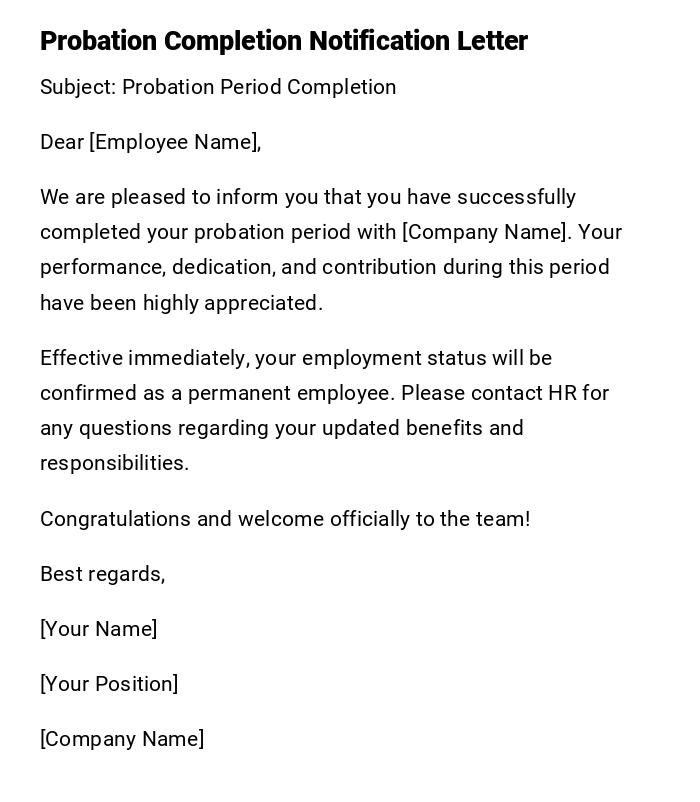
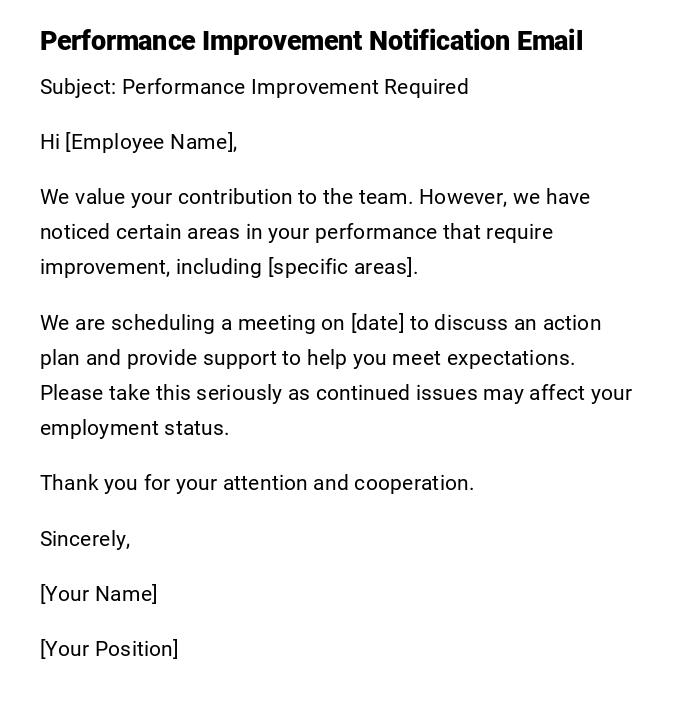
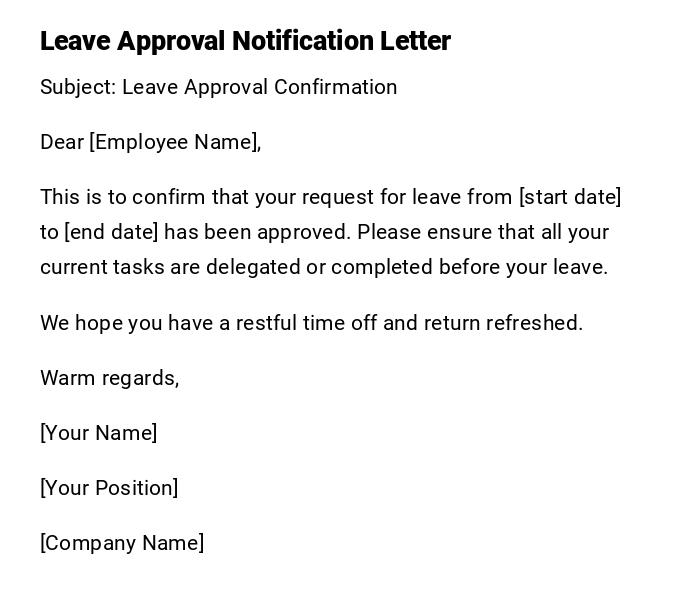
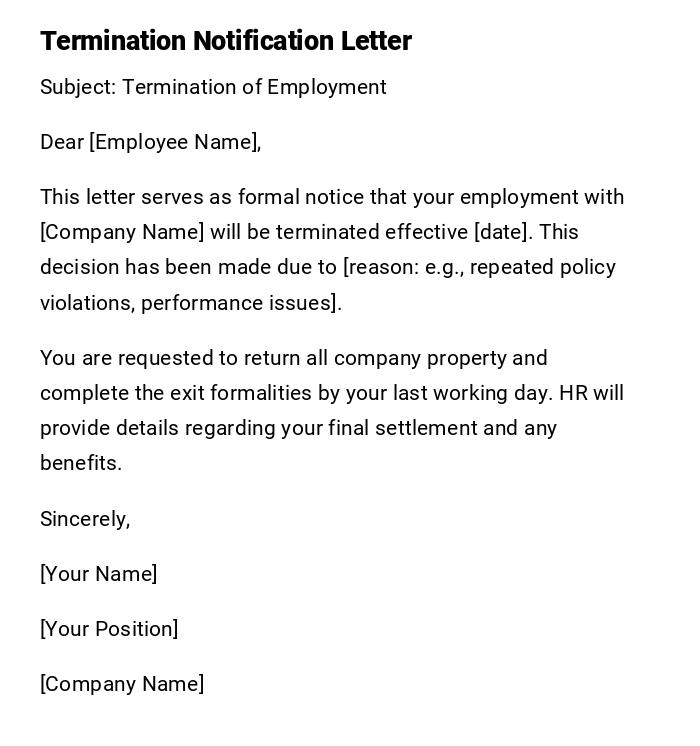
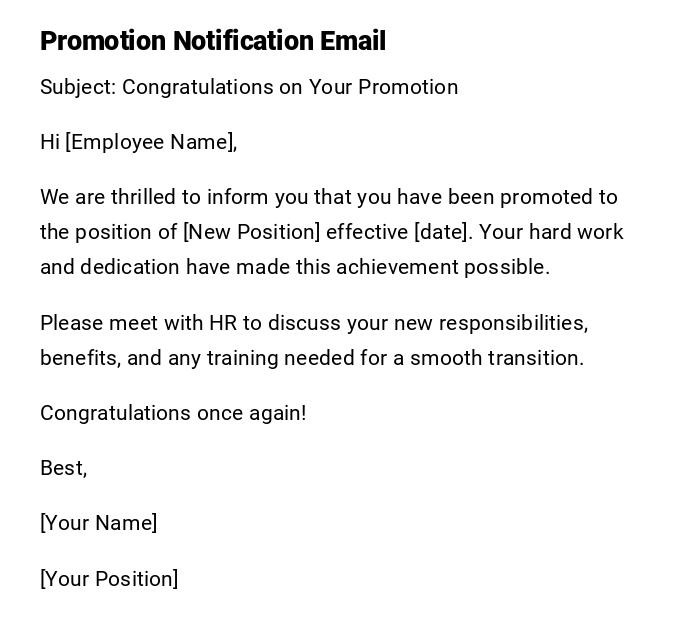
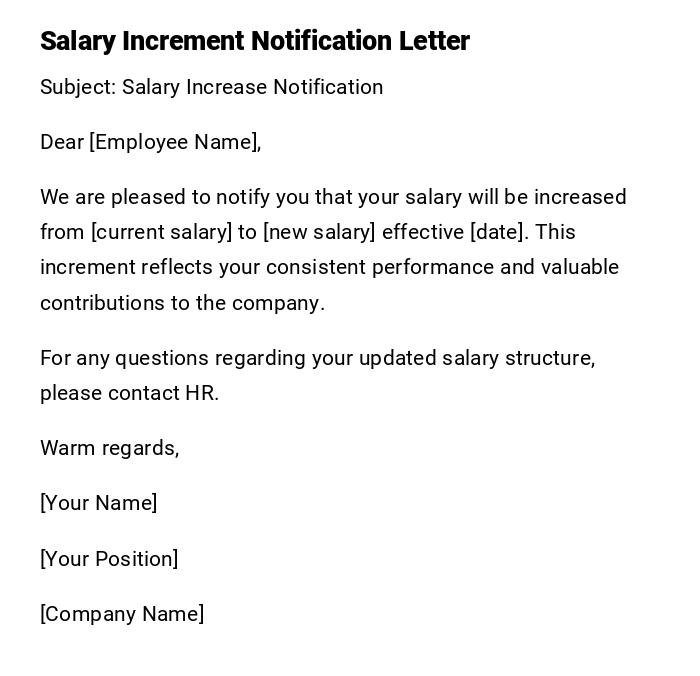
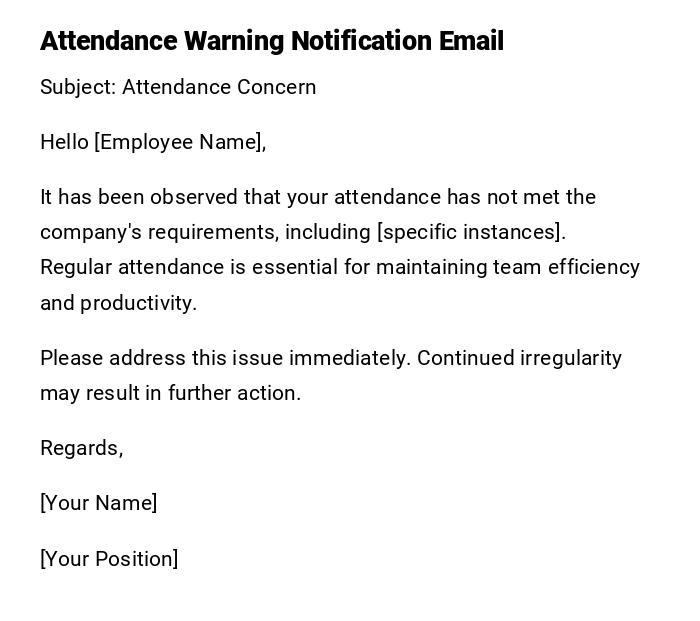
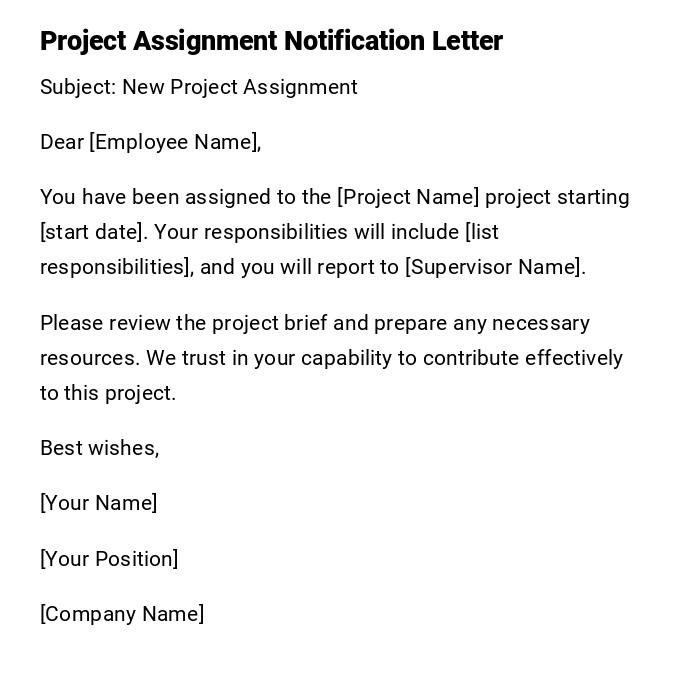

 Download Word Doc
Download Word Doc
 Download PDF
Download PDF